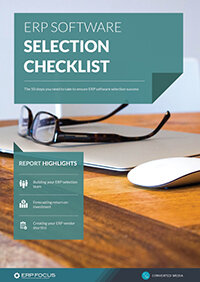ERP Modules: Beware the Bolt-On
Sometimes, important benefits that companies seek from an ERP implementation are not part of the ERP package they purchase, but are part of an available bolt-on application. Typical examples of bolt-on ERP modules are CRM, advanced supply chain management, vendor relationship management or HR. In most cases, ERP implementation consultants will advise that the company should install and become competent first with a core ERP package, and then later, to circle back and implement the bolt-on. This sounds sensible, and it will, unquestionably, reduce implementation risk. However, companies planning to do this should appreciate up front how difficult it can be to circle back and implement a bolt-on later. They need to seriously evaluate up front how the ROI of ERP would be impacted if they don’t obtain the benefits residing in the bolt-on.
The biggest obstacle to circling back for an additional ERP module is the combination of implementation fatigue and budget resistance. After going through the ERP change management trauma and expense of the core implementation, there can be a lot of push back on maintaining an ERP implementation team and/or going through more software change – even if you already own the software. After the fact, top leadership may ask the judgmental question, “If you knew this was important, and we needed it, why did you not implement it to begin with?” This is a logical question with a complicated and difficult answer.
How Did I Get Myself Into This?
There are several reasons you didn’t implement the bolt-on to begin with. The software vendor is complicit, because while the solution they sold you to fulfill your benefits requirements included bolt-on modules, they didn’t tell you that “bolt-on” in no way meant “plug and play”. Bolt-ons are as difficult as core implementations, albeit on a more focused subject area. The implementation consultants are reluctant to embrace bolt-ons as part of an implementation because (a) they are a very specialized knowledge area and consulting skills are often scarce and (b) few, if any, on the consulting team have experience with how the bolt-on integrates with the rest of the modules. So their best implementation strategy is to implement what they know how to do. The last complication, which is subtle, but important, is that an bolt-on remains a bolt-on because it doesn’t integrate seamlessly with the core ERP package. Think about that. The fact is, bolt-ons can have connectivity complications, unfriendly user interfaces, and may even have conflicts with other benefits you received from core ERP.
This isn’t a carte blanche condemnation of all ERP bolt on modules, or all implementation approaches, but it is a loud and clear warning to protect yourself – politically and contractually – if a very substantial part of your ERP justification results from a bolt on module. If fifty per cent of your ROI requires increased revenue from better lead management from CRM, then you need to either (a) figure out how to implement CRM at original go-live or (b) find an ERP package with that functionality built into core ERP.
Free white paper

ERP Implementation: 9 steps to success
The 9 proven steps you should follow when implementing ERP

Featured white papers
-

ERP Software Pricing Guide
Get the latest pricing information on over 80 popular ERP systems, and learn how to budget for your ERP project in our free guide
Download -

60-Step ERP Selection Checklist
Get the comprehensive checklist for your ERP selection project
Download -

ERP Demo Guide & Scorecard
Master your ERP demo with 5 easy steps using our free guide (includes demo scorecard)
Download
Related articles
-

The best ERP systems for process manufacturing
Consider these ERP systems when selecting your next process manufacturing ERP
-

CMMC Compliance: What Aerospace and Defense Manufacturers Need to Know
Key insights on CMMC compliance, deadlines, and securing DoD contracts with CMMC 2.0 certificatio...
-

5 ERP pricing definitions you need to understand
Have you mastered the ERP pricing lexicon yet? Getting to grips with these five definitions is a ...

